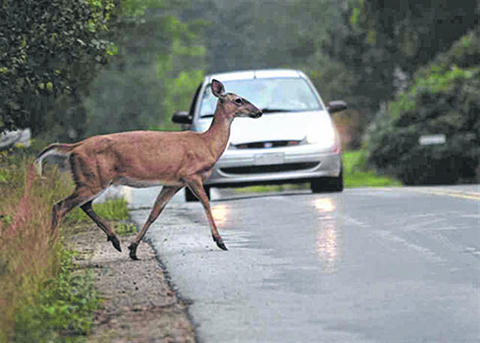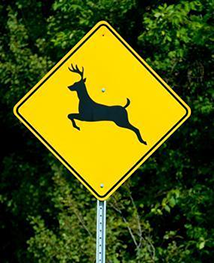
(Image source: limaohio.com)
The average, healthy whitetail buck weighs between 150 and 300 pounds, and the average doe weighs in at between 90 and 200 pounds (depending on the state and the amount of farming in the area). Even at the lighter end of the range, just imagine the damage to your car – and maybe to you and your family – if you hit one at 60+ miles per hour.
Often worse, though, are the accidents that happen to drivers trying avoid hitting a deer. A common scenario involves a driver swerving sharply to miss the deer, losing control, and winding up in the lane for oncoming traffic – with a head-on collision sometimes resulting. So let’s examine some statistics and facts to keep it from happening to you.
Deer-Car Crash Statistics
Deer-related vehicle accidents have been on the rise over the past few years, owing chiefly to habitat changes and the burgeoning deer population. According to the National Highway Safety Administration, the pertinent deer-car crash statistics are as follows:
- 5 million deer-related accidents annually
- A cost of over a billion dollars annually
- 10,000 injuries every year
- 175-200 fatalities annually
Prime Accident Season
The majority of deer-related vehicle accidents occur between October and December. There are a couple of important reasons why this is the prime season for deer-car crashes and, as a consequence, why you should be especially vigilant when driving.
First, the cooler weather and shorter days cause deer to be more active during daylight hours, rather than primarily at night. Also, by fall, crops have been harvested and fields cleared, so the easy meals for deer have disappeared, and they have to travel more searching for food. Most important is the fact that this is the rutting season when bucks are actively pursuing does and pushing them into more travel. Then, add to that the fact that it’s also deer season, with hunters walking the woods and causing deer to travel more – many times across highways – to elude them.
Tip for Avoiding Deer-Car Crashes
So how do you avoid deer-car crashes? Just keep these tips in mind . . .
Heed the Deer-Crossing Signs

(Image source: Consumer Affairs)
These signs are posted where they are for a good reason. Deer traffic right there is high, so extra caution is called for.
Be Aware of Time and Numbers
Most deer-related vehicle accidents occur between 6:00 and 9:00 pm, and that’s when drivers should keep an eye out for deer on the road. Also, even if you see only one deer, there are probably more that you haven’t seen yet.
Use High Beams if Possible
If you use your high beams as much as possible when driving at night (except, of course, when you encounter an oncoming car), you will be more likely to see deer at a greater distance and then be able to slow down or stop in time.
Don’t Swerve Hard
If you do come upon a deer in the road suddenly and unexpectedly, don’t swerve or cut the wheels any harder than you have to in order to avoid a collision. Swerving hard, rather than just slowing down, often results in loss of control and a worse accident than colliding with the deer.
Just follow these tips, and you’ll be able to enjoy your fall driving deer-collision free . . . even though it’s the prime season for deer-car accidents.

